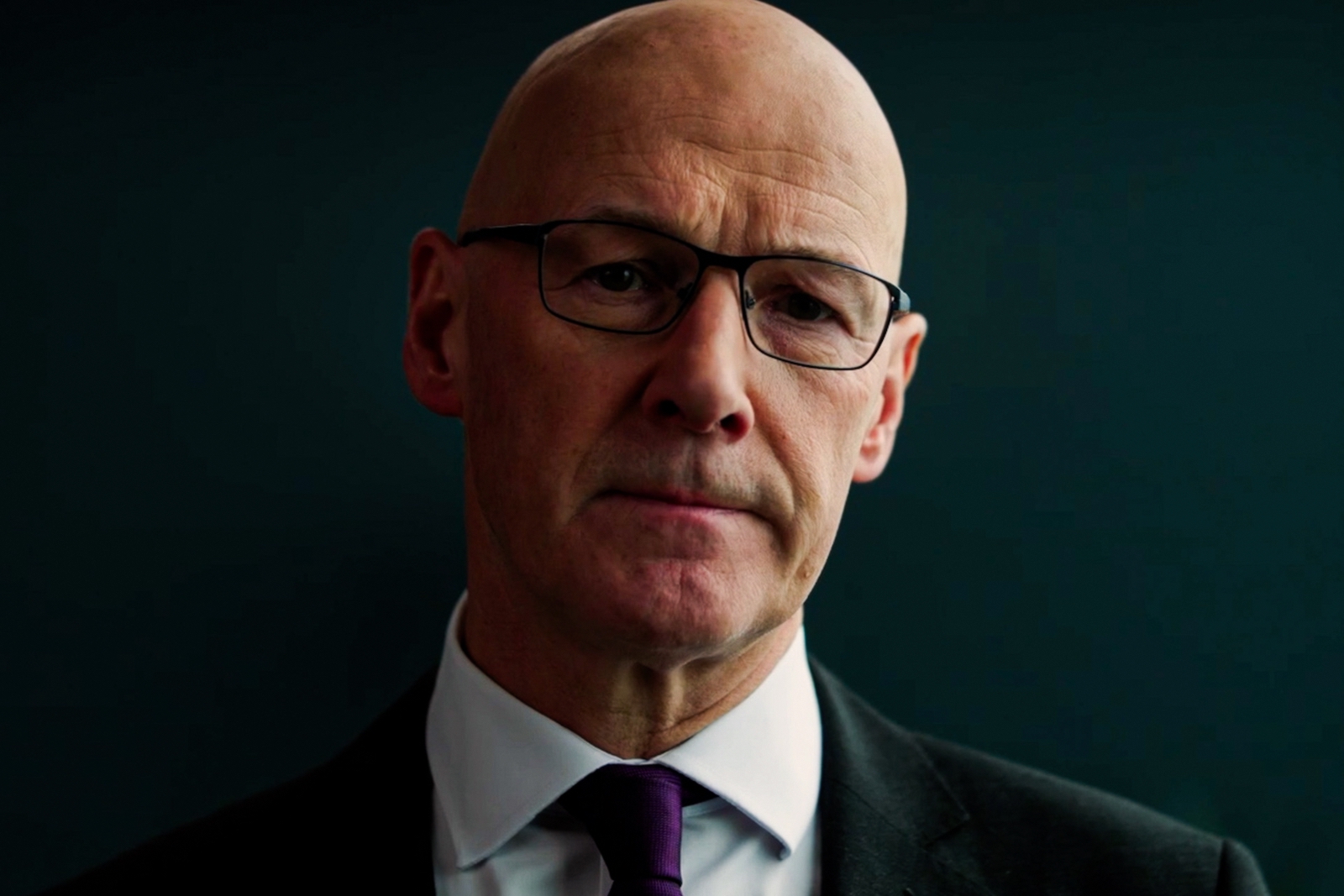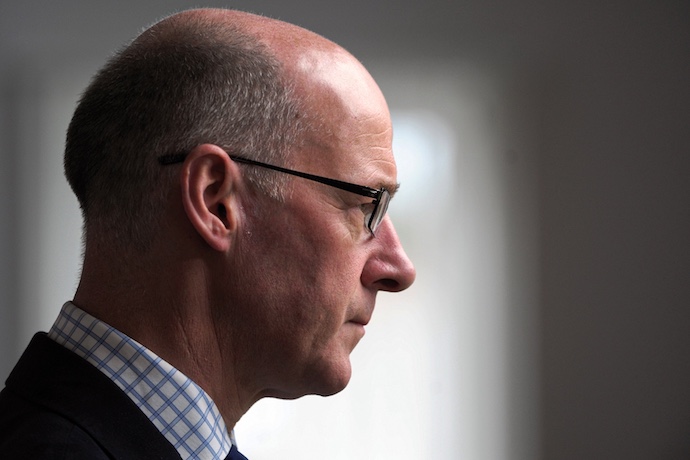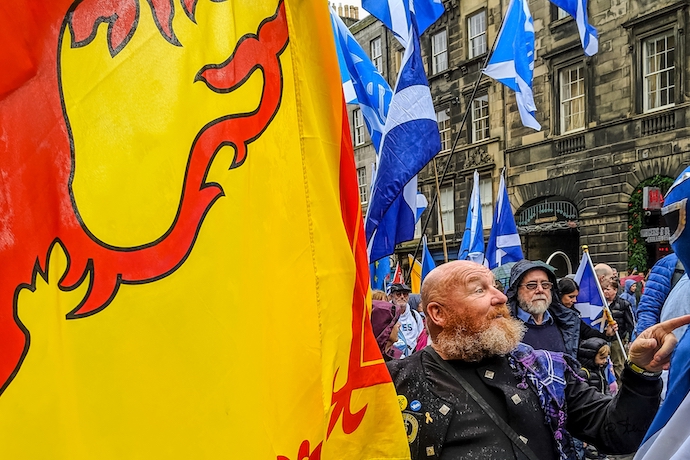
The Quiet Fight for Aye: Inside the SNP’s Calculated Comeback
This month in Aberdeen, the governing Scottish National Party doubled down on a simple message: victory in May’s Holyrood elections is the only valid path to another independence referendum.
At the party’s conference, delegates overwhelmingly approved First Minister John Swinney’s motion to fight 2026 on “a clear platform of national independence,” aiming expressly for the 65 seats needed for an outright majority in Holyrood in the 129-seat Scottish Parliament.
Swinney told activists they were “within touching distance.” Party strategists argue that defeating both Labour and the Conservatives would constitute irrefutable public consent for a new vote. Even a grassroots push to treat the election as a de facto referendum was pressed down by the leadership and overwhelmingly rejected. The Aberdeen line, distilled: one clear question, one clear answer—and no reprise of the muddled tactics blamed for the SNP’s Westminster wipe-out in 2024.
Beneath the rhetoric lies a wary realism. The party has bled parts of its once-fervent base—the “soft yes”—to disappointment and to Labour’s anti-Tory surge. Yet the polling trend is less bleak than it was. An independent Survation survey last month put the SNP at roughly 3 percent of Holyrood vote intention—a figure presented as a lead over Labour at 20 percent and, under Scotland’s proportional system, enough for a solid advantage if not a guaranteed majority.
An Ipsos poll, meanwhile, rated Swinney the most popular party leader in Scotland and tagged the SNP “the highest rated party” eight months out. Labour’s Scottish ratings are scraping near their cyclical lows as Nigel Farage’s Reform UK finds an audience on the margins.
But support for independence has barely moved. It hovers at roughly 50 percent despite two years of national argument. Recent polling by More in Common found Scotland essentially split down the middle on how it would vote in another referendum. The constitutional question is static; party fortunes are not.

Party and leader ratings
Ipsos’s latest Scottish Political Pulse makes grim reading for Labour’s ambitions in Edinburgh: only 29 percent think Scottish Labour is ready to govern, a steep drop from a year ago. Swinney’s net favorability still sits comfortably ahead of Anas Sarwar’s and of Keir Starmer’s, whose Scottish ratings have fallen by 47 percent. Scots may be dissatisfied with the status quo, but just now they judge Labour harshly and grant Swinney and the SNP a grudging primacy.
Even so, most SNP insiders will admit the path to 65 is narrow. Conference speeches mingled determination with caution. Swinney invoked 2011, when Alex Salmond’s majority forced serious referendum talks. The case he is making now is familiar: without a Scottish parliamentary majority, Westminster will continue to stonewall. Depute leader Keith Brown drove the point home—“the only way we can achieve independence is to ask a clear question and get a clear answer.”
They know the pitfalls. Labour’s surprise by-election win in Hamilton, conceded despite polls suggesting an SNP edge, and its Westminster advances have taught a hard lesson: only a laser-focused campaign can prevent a replay of last year’s losses.
Care visas and contrasts
To sharpen the choice, SNP leaders are staging policy contrasts designed to expose daylight with Westminster. Start with immigration. Labour at Westminster recently announced it would abolish the overseas care-worker visa route, closing off future recruitment from abroad. Swinney used his conference speech to promise the Scottish government would step in—on Holyrood’s dime—to keep care homes staffed. He pledged to underwrite visa applications for hundreds of existing foreign care workers who might otherwise lose their jobs, “so that Scotland’s older people do not pay the price for Westminster’s prejudice.” The immediate message: Edinburgh will protect carers now; London is being short-sighted.
The clash is cultural as well as technical. Swinney condemned what he characterizes as London’s “hostility” to migrants and countered with a Scottish policy ledger: free university tuition, a non-domestic water charge, free bus travel for under-22s—small-p policy proof points, in the SNP’s telling, that a devolved government can deliver differently.
This rolls up into the larger constitutional pitch. Swinney insists independence can be paired with swift EU membership—“a golden combination of independence, rejoining the EU and…vast, low-cost, renewable energy.” In this framing, nearly every issue, from care homes to climate, becomes an independence issue. London fumbles the basics; Scotland, if fully empowered, could rejoin the European mainstream.
Consider the youth-mobility scheme now under discussion between the UK and the EU: a time-limited visa giving young adults up to two years to live and work abroad without a formal job offer. Unionists will hail it as a win delivered by the UK state; the SNP will counter that an independent Scotland could re-enter such European frameworks more quickly and more comprehensively. In Aberdeen, Swinney tied that argument directly to the referendum case.

Play that domestic record
The domestic record is meant to anchor wavering voters. Swinney reminded Scots that under SNP rule, council tax and water bills are among the lowest in the UK and child poverty rates are at record lows. Labour pushes back, calling those claims selective or tied to long-term targets or reserved powers. The SNP replies that, judged against Westminster’s struggles with inflation and the NHS, its own record stacks up.
That clash matters because many voters still prioritize bread-and-butter services above constitutional change. The SNP knows it must perform credibly on policy to keep older and undecided voters from drifting toward Labour. Every manifesto pledge, then, is looped back to the core pitch: without full control over visas, taxes, and spending—without EU doors opening—Edinburgh will always be constrained by London.
Polls and the yawning gulf
The numbers tell a story of opportunity threaded with peril. The SNP is ahead in headline vote intention, but the surveys also suggest a result not far from 2021—hardly a runaway mandate. The party’s lead is touted at around 17 points, among the largest this century. Yet Scotland’s split-ticket system makes every seat labor-intensive. Independence support remains near 50 percent, only a shade above the 45 percent recorded in 2014. One big push could move a clutch of seats; one bad week could lose them.
Then there’s the uneasier trendline: a Scottish Social Attitudes survey says public trust in the Scottish government is the lowest since devolution, and satisfaction with core services such as the NHS and education is slipping. After the Hamilton loss, several insiders concede the party misread the board—fixating on Reform while the real opponent, as ever, was Labour. The new mantra is back to basics: re-engage every lapsed independence voter and consolidate the core before chasing the middle.
Labour, for its part, plays a longer game. With time to refurbish its image and a conference in Liverpool falling just weeks before Holyrood votes, party strategists think Anas Sarwar can claw back center-left voters in late innings. For now, Swinney’s SNP owns the momentum; once the campaign hardens, the margins may compress.
Nightmare for the newsrooms
All of this unfolds under a constricting media glare. Scotland’s local and regional newsrooms are shrinking just as scrutiny should be intensifying. In September, STV announced about 60 job cuts and the scrapping of its long-running Aberdeen news program, consolidating output into a single Glasgow-based bulletin. Local voices sounded the alarm. The Aberdeen & Grampian Chamber of Commerce warned the move would “silence the voice of the North-east at a critical time,” with the North Sea economy and the energy transition needing sustained, place-specific coverage. The National Union of Journalists called the cuts “devastating.” Swinney himself, promising to petition Ofcom, conceded that “sustained media engagement” is a democratic necessity.
The contraction is broader than one newsroom. DC Thomson has, in recent years, cut 300 staff and dozens of titles; in 2024, the BBC axed its hour-long flagship, The Nine. The result is a thinner public square. Decisions taken in Holyrood or Aberdeen now meet fewer interrogators in fewer forums, increasing the risk of a creeping “news desert” in which policy is made and unmade with too little daylight.
Sailing on a second wind
So Aberdeen laid out a theory of victory: consolidate a polling edge, turn policy contrasts into voter confidence, and make Holyrood 2026 the clarifying question that Westminster cannot duck. The risk factors are obvious—service strain, public fatigue, and a shrinking media ecosystem that could muffle the debate. Over the coming months, the SNP’s “win Holyrood, win the mandate” strategy will be stress-tested in every marginal ward and every nightly bulletin that remains.
Three questions will decide the arc. First, can the SNP out-organize Labour on doorsteps, where Scottish elections are won? Second, will those same voters give the SNP credit for social policies or pin NHS queues and classroom pressures on ministers in Edinburgh? And third, will voters even hear a persuasive case, if the local papers and regional broadcasts that once mediated Scottish politics continue to disappear?
The political year ahead may hinge less on Westminster’s maneuvers than on whether the SNP can translate a disciplined slogan into a working majority at the ballot box—at a moment when the national mood is volatile and the media megaphone is turning down. The dice have been thrown in Aberdeen. With local journalism fraying and potential EU pathways dangling just out of reach, the campaign begins in earnest. London watches. Brussels takes note. Scots will decide whether “one clear question” yields the answer the SNP needs.
